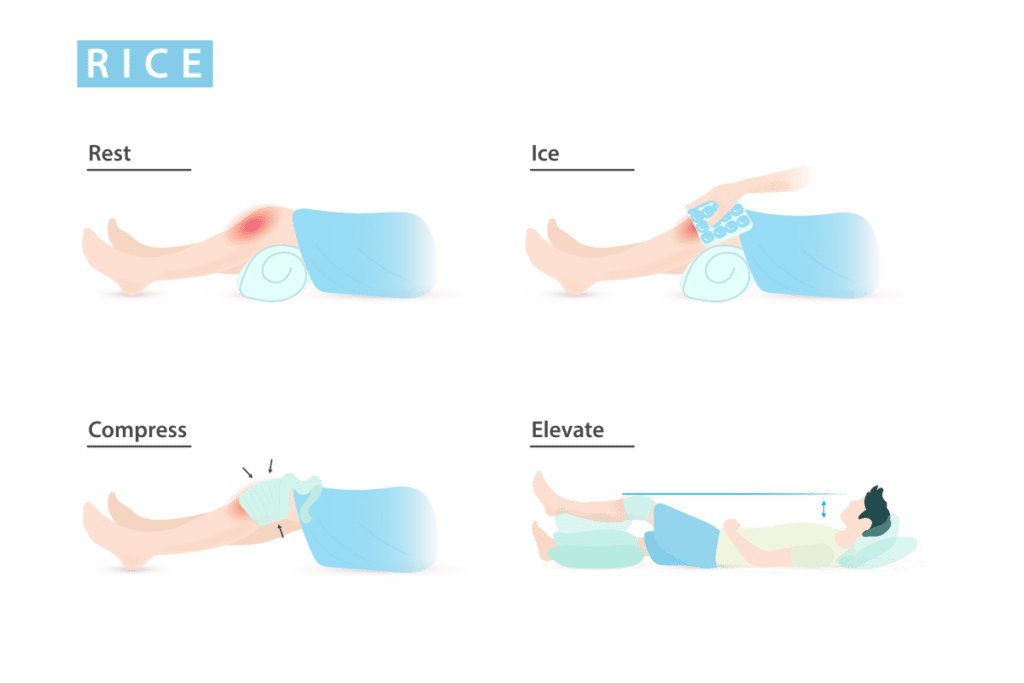Basics of R.I.C.E. Therapy for Injuries: Injuries are an inevitable part of life, but how we manage them can significantly impact our recovery process and overall well-being. One popular method for managing injuries is the R.I.C.E. protocol, which stands for Rest, Ice, Compression, and Elevation. This protocol is widely used in first aid and sports medicine to reduce pain, inflammation, and swelling associated with various injuries.

Understanding the R.I.C.E. Protocol
Rest: Rest is crucial for allowing the injured area to heal properly. By avoiding activities that exacerbate pain or further damage the injury, you give your body the time it needs to repair itself. However, it’s essential to strike a balance between rest and gentle movement to prevent stiffness and promote circulation.
Ice: Applying ice to the injured area helps constrict blood vessels, reducing blood flow and inflammation. This can alleviate pain and swelling, especially during the acute phase of an injury. Ice packs or cold compresses should be applied for 15-20 minutes at a time, several times a day, for the best results.
Compression: Compression helps limit swelling and provides support to the injured area. Using an elastic bandage or compression wrap can help stabilize the injury, reduce movement, and prevent further damage. However, it’s essential not to wrap the injured area too tightly, as this can impede blood flow.

Elevation: Elevating the injured limb above the level of the heart helps reduce swelling by allowing excess fluid to drain away from the area. This can be achieved by propping up the injured limb on pillows or cushions while resting. Elevation is particularly beneficial during the initial stages of injury when swelling is most pronounced.
The Importance of Following the R.I.C.E. Protocol
Basics of R.I.C.E. Therapy for Injuries: Adhering to the R.I.C.E. protocol can significantly accelerate the healing process and minimize the risk of complications. By taking immediate action after an injury occurs, you can help manage pain and swelling effectively, allowing your body to focus on repairing the damaged tissues.

Transitioning from R.I.C.E. to Active Recovery
While the R.I.C.E. protocol is essential for the initial management of acute injuries, it’s equally important to transition to active recovery once the acute phase has passed. This involves gradually reintroducing movement and exercises tailored to the specific injury to improve strength, flexibility, and function.
Conclusion
The R.I.C.E. protocol is a simple yet effective method for managing injuries and promoting recovery. By incorporating rest, ice, compression, and elevation into your injury management routine, you can minimize pain and swelling, expedite healing, and get back to your normal activities sooner.
Know More About What is the RICE method for injuries?
